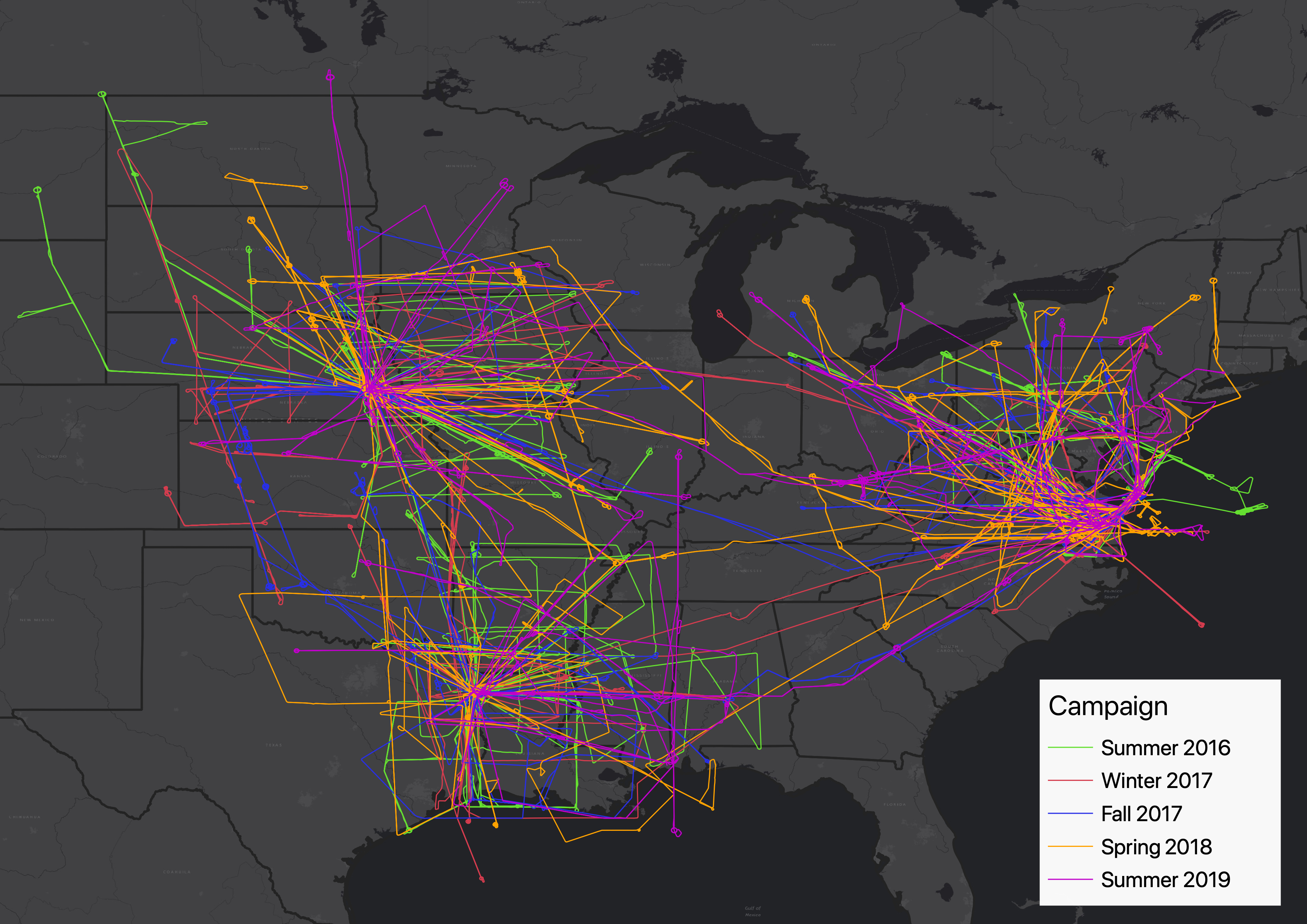The ORNL DAAC recently released a new ACT-America dataset developed by Cui, Y.Y., et al. (2023):
FLEXPART Influence Functions for ACT-America, 2016-2017
This dataset contains a set of Lagrangian particle dispersion simulations of carbon dioxide concentrations using the FLEXible PARTicle (FLEXPART) model. FLEXPART quantified the source-receptor relationships, so-called "influence functions", in a backward mode. The simulations were constructed for five Atmospheric Carbon and Transport America (ACT-America) deployments over the eastern U.S. that occurred in 2016-2019. Each receptor of the influence function is the 30-second or 10-minute interval along flight tracks, characterized by a box with boundaries between the maximum and minimum latitude/longitude as well as between the maximum and minimum altitudes during the interval. Each receptor box released 5,000 particles and simulated their transport and dispersion backward for 10 or 20 days. The simulations were driven by 27-km meteorology provided by the WRF-Chem simulation or by ERA-Interim data from the European Centre for Medium-Range Weather Forecasts (ECMWF). Background levels of carbon dioxide were obtained from CarbonTracker and OCO-2 v9 MIP. The data are provided in netCDF and FLEXPART binary formats.
The ACT-America mission spanned five years and included field campaigns covering all four seasons over central and eastern regions of the United States. ACT-America's objectives were to study the transport and fluxes of atmospheric CO2 and CH4. Two instrumented aircraft platforms, the NASA Langley Beechcraft B-200 King Air and the NASA Wallops Flight Facility's C-130 Hercules, were used to collect high-quality in situ measurements across a variety of continental surfaces and atmospheric conditions. At times they flew directly under Orbiting Carbon Observatory-2 (OCO-2) overpasses to evaluate the ability of OCO-2 to observe high-resolution atmospheric CO2 variations. The C-130 aircraft was also equipped with active remote sensing instruments for planetary boundary layer height detection and column greenhouse gas measurements.
Additional data from ACT-America and other relevant links can be found on the ORNL DAAC's ACT-America Project Page.
Citation: Cui, Y.Y., A.R. Jacobson, S. Feng, D. Wesloh, Z.R. Barkley, L. Zhang, T. Gerken, K. Keller, D.F. Baker, and K.J. Davis. 2022. FLEXPART Influence Functions for ACT-America, 2016-2017. ORNL DAAC, Oak Ridge, Tennessee, USA. https://doi.org/10.3334/ORNLDAAC/2018

